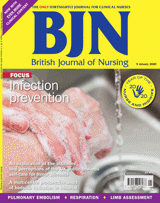References
Fatigue, burnout, work environment, workload and perceived patient safety culture among critical care nurses
Abstract
A study was conducted to explore whether fatigue, workload, burnout and the work environment can predict the perceptions of patient safety among critical care nurses in Oman. A cross-sectional predictive design was used. A sample of 270 critical care nurses from the two main hospitals in the country's capital participated, with a response rate of 90%. The negative correlation between fatigue and patient safety culture (
Patient safety is considered to be one of the most important health issues across the world (World Health Organization (WHO), 2016) and has been defined as the ‘absence of preventable harm to a patient and reduction of risk of unnecessary harm associated with health care to an acceptable minimum’ (WHO, 2017). It has an impact on both patient outcomes and the healthcare system itself; it is deemed to be one of the credible measures of a hospital's performance (Welp et al, 2015), and is an important factor in ensuring the delivery of high-quality health care (Rajalatchumi et al, 2018).
WHO (2017) has stressed the importance of identifying factors that affect patient safety and monitoring improvements in patient safety. About 43 million patient safety events occur worldwide every year, with the estimated cost of medication errors amounting to US $42 billion. This is considered the third patient safety challenge, after healthcare-associated infection and safe surgery (WHO, 2017).
Register now to continue reading
Thank you for visiting British Journal of Nursing and reading some of our peer-reviewed resources for nurses. To read more, please register today. You’ll enjoy the following great benefits:
What's included
-
Limited access to clinical or professional articles
-
Unlimited access to the latest news, blogs and video content

